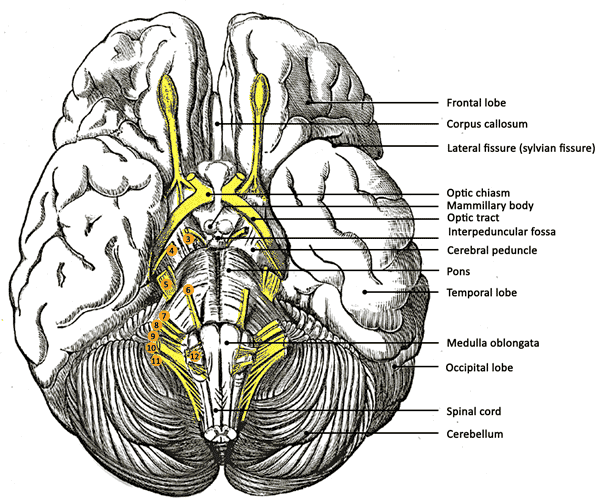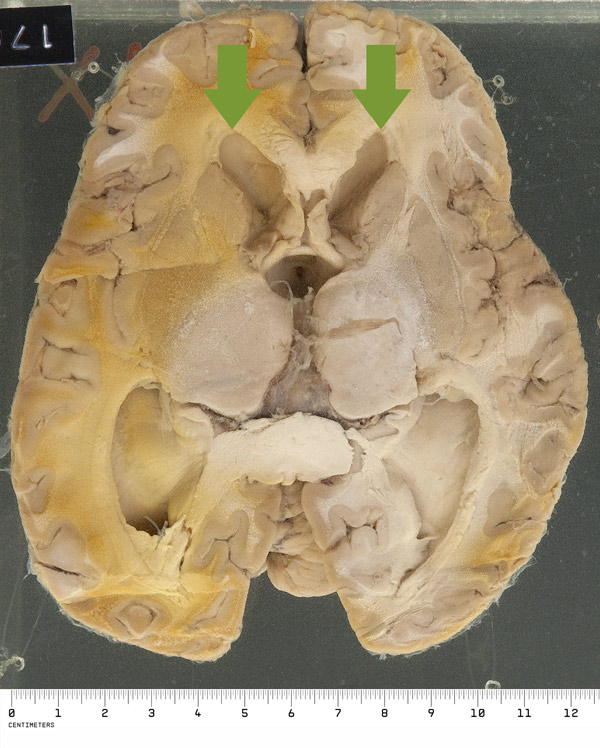Tuberculous meningitis (TBM) in young children typically follows milliary dissemination of bacilli to the choroid plexus and then to the cerebrospinal fluid. The inflammatory reaction is concentrated in the basal cisterns.
In older age groups TBM typically follows rupture of a leptomeningeal / cortical tuberculoma ("Rich-McCord focus") into the cerebrospinal fluid.
A common complication of TBM is vasculitis and thrombosis of small penetrating vessels, leading to brain infarction and focal neurological deficits.
Other important complications are obstructive hydrocephalus and cranial nerve palsies. Deafness (8th cranial nerve) is especially common in survivors.
Infection with Human immunodeficiency virus (HIV) increases the risk of developing TBM, as well as the risk of complications and death.
Tuberculous meningitis (Case 1835)
This 2 ½ year old child was admitted to a country hospital following a seizure.
She showed the features of stage III tuberculous meningitis and her condition rapidly deteriorated despite initiation of treatment.

The brain is markedly swollen (with flattened gyri and narrowed sulci).
There is a thick, fibrinous exudate limited to the region of the basal cisterns. It envelopes the circle of Willis and several cranial nerves, in particular the 1st (optic) and the 3rd.
The lateral (or exit) foramina of the 4th ventricle are also obscured.

Image source (adapted from): en.wikipedia.org/wiki/File:Gray724

The reverse of the specimen shows striking symmetrical ventricular dilatation (as shown by rounding of the normally acute anterior horns near the top of the picture)
[The orange discolouration of part of the brain is an artefact produced by prolonged fixation.]

This is the right lung of this child. There is a Ghon focus in the apex of the right lung, and the hilar, peribronchial and peritracheal glands are enlarged and caseous - this is a primary tuberculous complex or Ghon complex.
Recent reviews
Garg RK. Tuberculous meningitis.Acta Neurol Scand. 2010; 122: 75–90.
available at http://onlinelibrary.wiley.com/doi/10.1111/j.1600-0404.2009.01316.x/pdf
van Well GT, Paes BF, Terwee CB, Springer P, Roord JJ, Donald PR, van Furth AM, Schoeman JF. Twenty years of pediatric tuberculous meningitis: a retrospective cohort study in the western cape of South Africa. Pediatrics. 2009;123(1):e1-8.
available at http://pediatrics.aappublications.org/content/123/1/e1.full.pdf+html
